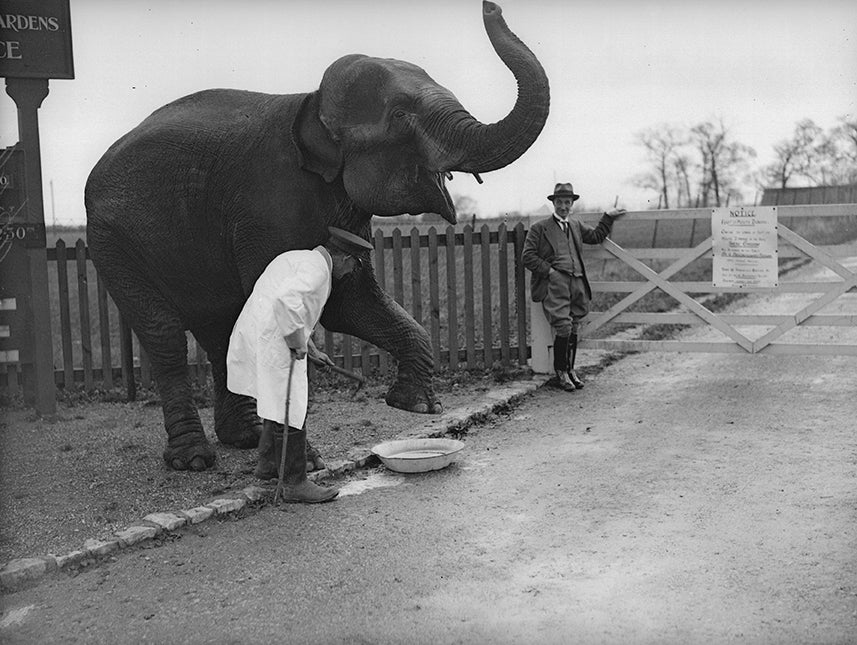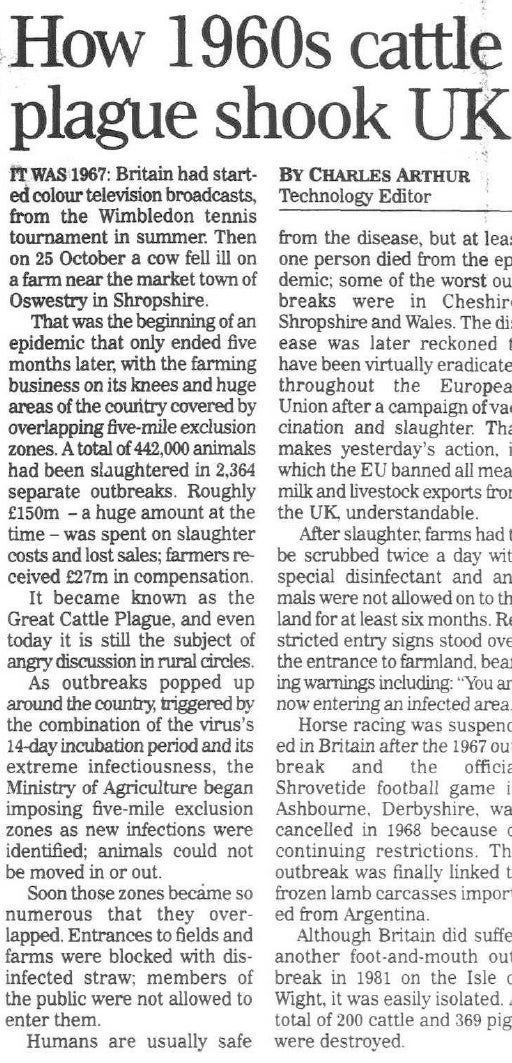How the 1960s cattle plague shook the UK
Charles Arthur looks back at the five-month-long Great Cattle Plague, which saw 442,000 animals slaughtered and even today is still the subject of angry discussion in rural circles

It was 1967: Britain had started colour television broadcasts, from the Wimbledon tennis tournament in summer. Then on 25 October a cow fell ill on a farm near the market town of Oswestry in Shropshire.
That was the beginning of an epidemic that only ended five months later, with the farming business on its knees and huge areas of the country covered by overlapping five-mile exclusion zones.
A total of 442,000 animals had been slaughtered in 2,364 separate outbreaks. Roughly £150m – a huge amount at the time – was spent on slaughter costs and lost sales; farmers received £27m in compensation.
It became known as the Great Cattle Plague, and even today it is still the subject of angry discussion in rural circles.
As outbreaks popped up around the country, triggered by the combination of the virus’s 14-day incubation period and its extreme infectiousness, the Ministry of Agriculture began imposing five-mile exclusion zones as new infections were identified; animals could not be moved in or out.
Soon those zones became so numerous that they overlapped. Entrances to fields and farms were blocked with disinfected straw; members of the public were not allowed to enter them.
Humans are usually safe from the disease, but at least one person died from the epidemic; some of the worst outbreaks were in Cheshire, Shropshire and Wales.

The disease was later reckoned to have been virtually eradicated throughout the European Union after a campaign of vaccination and slaughter. That makes yesterday’s action, in which the EU banned all meat, milk and livestock exports from the UK, understandable.
After slaughter, farms had to be scrubbed twice a day with special disinfectant and animals were not allowed on to the land for at least six months. Restricted entry signs stood over the entrance to farmland, bearing warnings including: “You are now entering an infected area.”
Horse racing was suspended in Britain after the 1967 outbreak and the official Shrovetide football game in Ashbourne, Derbyshire, was cancelled in 1968 because of continuing restrictions.
The outbreak was finally linked to frozen lamb carcasses imported from Argentina.
Although Britain did suffer another foot-and-mouth outbreak in 1981 on the Isle of Wight, it was easily isolated. A total of 200 cattle and 369 pigs were destroyed.
This article first appeared in The Independent on 22 February 2001
Join our commenting forum
Join thought-provoking conversations, follow other Independent readers and see their replies
Comments